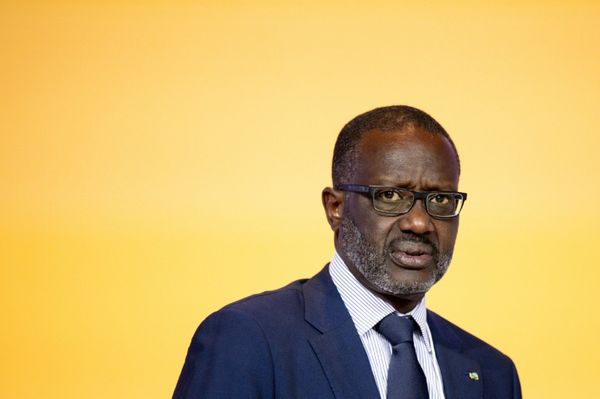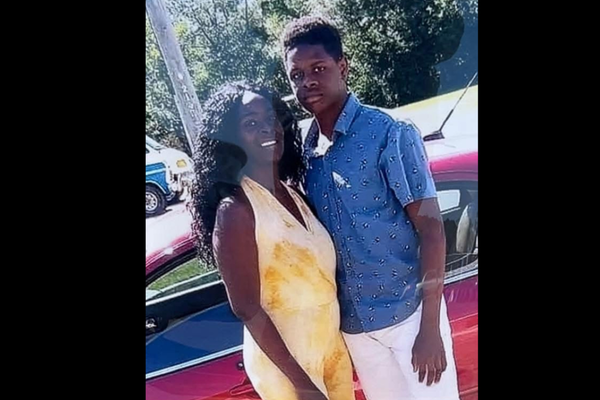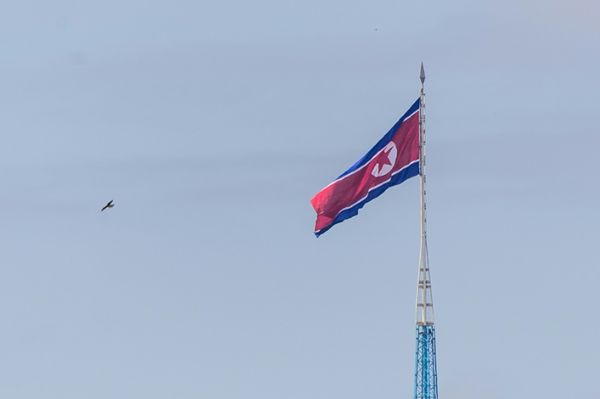
Never mind the buzz around Katarina Johnson-Thompson in the heptathlon or Noah Lyles’s Covid bronze. Another battle is being waged in Paris among the TikTok-obsessed and it’s all about which hand gesture is going to win summer.
Will it be the peace sign, as shown by the rapper Snoop Dogg while carrying the Olympic torch to the opening ceremony? Or will it be the “hand heart”, so sweetly semaphored by the US gymnast Simone Biles to her husband, Jonathan Owens, last week?
If the key to victory is frequency, the hand heart has it, thanks to plenty of other Olympic sightings, from the French steeplechaser Alice Finot who followed her pre-race heart to her “Al-eece! Al-eece!”-chanting home crowd with a new European record and a marriage proposal to her amour, to Team GB’s skateboarding medallist Sky Brown, table-tennis players, canoeists, footballers and rugby players. Add to that virtually all celebrities, including Taylor Swift, who in 2011 claimed to have invented it: “It means something between ‘I love you’ and ‘thank you’,” she said at the time.
It’s a useful gesture. “The hand heart is an effective way for athletes to show their affection to their fans and connect with them,” said the Australian linguist and podcaster Lauren Gawne. She was not convinced Swift pioneered the gesture. She admitted: “Tracing [the origin] is often very difficult. But Taylor certainly popularised it to this level of visibility.”
Before you cup your hands together to have a go, the battle gets a bit more complex because gen Z and gen Alpha – all those aged under 27 – argue that millennials have got the hand heart all wrong. The way to do it, apparently, is not to have all fingers touching, but by contorting just the index and middle digits together into a heart shape.
“This is the only heart that makes physical and logical sense,” says one TikToker in the video “Millennial Vs Gen Z Heart Sign”. “You cannot convince me that this nonsense [the millennial heart] is better than this.”
Another, captioned “Guess the millennial”, shows a Zoomer (a very gen Z way of saying gen Z) doing their version with her cafe co-workers until she encounters a millennial colleague, who – gasp – offers a thumb instead. Rumbled, grandma!
The gen Z version is smart because it requires youthful dexterity – you only need to Google “Benedict Cumberbatch trying to do finger heart” to appreciate how hard it is for grownups to coax fingers into place on demand. “Gen Z and gen A are no different to when we were kids,” said Rachel Richardson of the newsletter Highly Flammable. “We didn’t want to be like our parents. We thought everything our parents did was deeply uncool – they’re reinventing ways to distinguish themselves.” So, yes, it’s warfare, but, she added, “in the way you’d laugh at your dad for getting a cool new pair of trainers”.
Indeed, the desire for young people to put distance between them and their elders has produced a steady stream of hand gestures such as “finger hearts”, “cheek hearts” and even “biting hearts”. “The thing about hand gestures is that they are wonderfully ephemeral,” said Gawne. “There’s the combination of different cultures and generations, plus social media, so things can just shoot off in different directions. It makes for a really interesting space.”
And what about the peace sign? Despite plenty of appearances in Paris, via the double-medal-winning Indian shooter Manu Bhaker, the judokas Hifumi Abe of Japan and the Palestinian Fares Badawi, and, of course, Snoop, Zoomers view it as “cringe”, according to Richardson, because it is “associated with their parents and the Spice Girls”.
But what do Zoomers know? Wikipedia lists 17 different political and social connotations for the V sign, from Argentina to Iran to the Philippines – and that’s not including the “up yours” version or its original intention, an emblem for allied victory in the second world war. Its modern cultural heartland is east Asia, where it isn’t just a photographic pose that signifies camera-readiness (hailing, apparently, from a moment of spontaneity during a Konica TV ad shoot in 1970s Japan), but, said Fiona Harkin, a director at the foresight consultancy The Future Laboratory, “It’s also about happiness and fun – it’s the culture of cute and kawaii.”
So peace and joy versus love and gratitude – which gesture wins out? And who decides? “For sure, it’s gen Z,” said Harkin. “They’re the ones that care about that codification. We have to have our codes to flex against the previous generation. And thank goodness for that – that’s how we get the friction that creates change.” Time to limber up those fingers?







